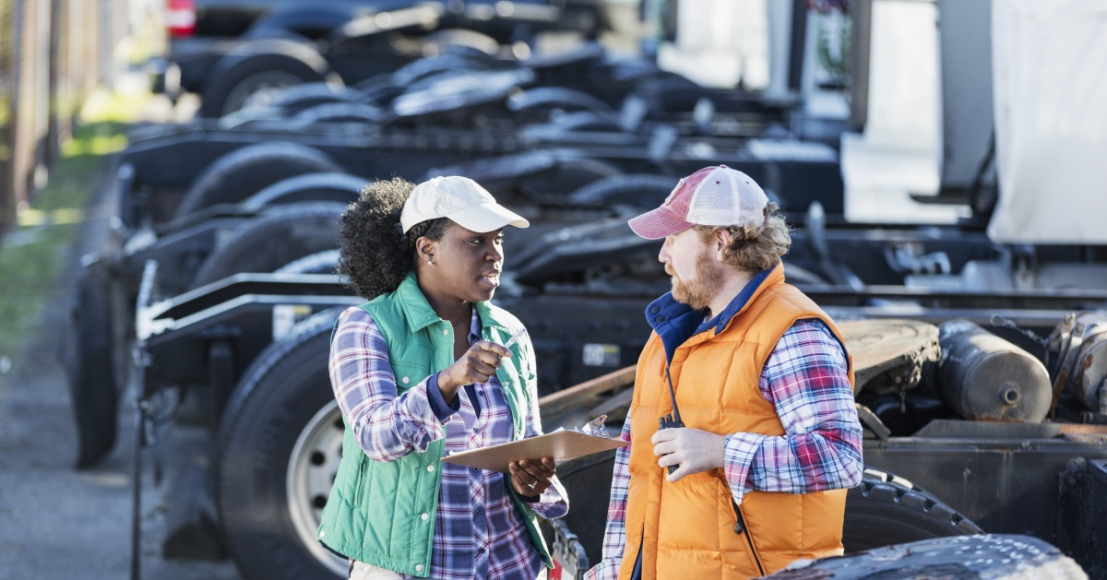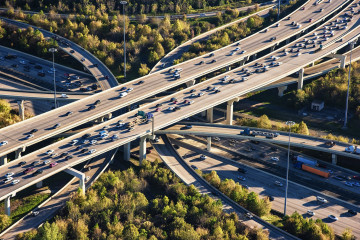What are the risks related to contracting fleet vehicle services and how can companies mitigate these risks to ensure a safe working environment for everyone?
Fleet vehicles are powerful tools used to transport goods, skilled workers, and other assets to and from final destinations. Owning and operating a fleet likely means that third-party vendors are involved to ensure the fleet is refueled, washed, maintained, and serviced to operate safely and efficiently.
Ensuring the safety of workers and the public through proper maintenance and servicing of fleet vehicles is a high priority for companies relying on their fleets to fulfill the demands of their clients and customers. This requires careful management of the risks related to third-party fleet service vendor and contractor activities. But what are these risks, and how can companies manage them?
Risks & Control Measures for Fleet Service Vendors
Fleet vehicles must be continuously maintained and are often stored at third-party sites before and after use. Antea Group supported a mass distribution facility by completing detailed risk assessments of third-party maintenance, washing, and refueling activities, covering the overall risk expectation for the use of vendors for these services.
To uncover these risks, Antea Group discussed fleet service operations with vendor representatives and visited the fleet service areas in-person to observe procedures and day-to-day activities. Here are the top contractor-related risks unearthed during the process and the measures necessary to mitigate/control the risks:
Environmental Impacts
-
Potential Permitting Requirements and Legal Implications: Vendor activities conducted outdoors may impact the stormwater compliance and/or waste program of a facility. Leaking oil pans during fleet maintenance, the use of harmful detergents during fleet washing, or fuel spills during refueling are examples of potential environmental impacts associated with fleet services. The spill prevention and emergency response plans for the facility should be revised to address any required spill response activities including those necessary during off-hour operations. Response procedures must also be clearly communicated to vendors and contractors and verified to ensure compliance.
-
Chemical Use and Handling: Each type of fleet vehicle service likely requires the use of chemicals or flammable liquids. Vendor Safety Data Sheets (SDS) should be reviewed in advance by a competent individual to determine the risk the chemical(s) may pose to the facility and workers. Fleet washing activities require the use of detergents and the goal of the facility should be to ensure fleet washing vendors use of an environmentally-friendly detergent that is unlikely to result in skin or eye damage to the workers conducting the activities. The facility must also ensure that vendors have proper chemical handling management procedures, training, and personal protective equipment to reduce risk and exposure. When a stationary eyewash station or first aid kit is not easily accessible in fleet service areas, the vendors should be required to maintain a mobile eyewash station and first aid kit, with individuals trained to respond to and report exposures or injuries.
-
Waste Generation: Depending on the vendor procedures and contract conditions, vendors, such as fleet repair and maintenance technicians, may anticipate leaving waste oil, chemically-saturated personal protective equipment, and/or spill cleanup materials for the facility to manage. The facility must ensure that the waste management expectations and responsibilities are clearly laid out in the contract and communicated during orientation to avoid any waste-related concerns. If necessary, appropriate waste disposal containers must be provided, properly labeled, and disposed of based on the SDS and applicable regulatory requirements.
Work-Related Safety Hazards
-
Fleet service activities may be conducted off-hours (at night) or in remote parking areas, which will likely impact anticipated risks/challenges. Adequate lighting in work areas, security against crime or wild animals, lack of sanitation facilities (if the facilities are locked at night), and the procedures or availability of personnel to report to regarding issues such as spill and/or injuries need to be reevaluated based on location and time of activities. Risk assessments should be conducted at these locations during the time frame when the activities will be conducted to ensure all risks and hazards are evaluated. Appropriate risk control measures must be identified and implemented to ensure the safety of the workers.
-
The facility incident and injury reporting requirements and procedures should be thoroughly communicated to vendors. Prompt and effective incident reporting allows health and safety professionals to identify trends and hazards not previously or adequately addressed such as poor lighting or security. It also facilitates the prevention of future incidents through the resulting hazard and risk control.
Mitigating risks associated with fleet services may seem daunting to an already time-strapped mass distribution facility, however, there are several actions that can be taken to fill gaps and reduce risk.
Selecting and Evaluating a Fleet Service Vendor
When selecting a fleet service vendor, it is important to review and evaluate the following:
Health & Safety Programs
-
Most larger organizations maintain health and safety programs or manuals that cover topics associated with their work activities. Reviewing health and safety programs and manuals can provide insight into the safety culture of an organization. One very important program that should be reviewed is incident reporting and investigation. All organizations should enable employees to stop work and report hazardous conditions or injuries without fear of repercussions.
Training Programs
-
Effective training programs are thorough, documented, and can be verified through conversation with workers or observation of work activities. If workers do not receive task or hazard-specific training, they are at higher risk for injury.
Historical Safety Data
-
Reviewing safety performance history can help with the selection of a safety-conscious vendor. It can also help the facility identify potential areas where additional controls, training, or protective equipment may be necessary.
Existing Risk Assessments or Job Hazard Analysis
-
Proper risk and hazard identification is the first step in establishing a safe work environment. If a vendor has not identified the risks and hazards associated with their activities, this can be accomplished using a risk assessment.
Other
- Insurance coverages and Experience Modification Rate (EMR) reviews can also provide insight into the overall safe performance of a vendor.
Evaluation of these items/topics may be conducted through document review, observation of activities, and conversation with workers and vendor management.
Understanding the Risks and Making Improvements
We encourage companies to dig into the essential daily activities and procedures necessary to maintain their fleet, as this is where the biggest opportunity for identifying high-hazard tasks and making practical improvements lies.
The big takeaway? Ensure that everyone involved in managing the fleet—internal and contract—understand the risks, know how to prevent injury or exposure, and have the tools to conduct their work safely.
We know this is easier said than done, but depending on your company size and structure, there are several ways to make these improvements. One significant example is increasing internal and contractor safety awareness through communication. That is, putting on your marketing hat to push out regular communications around health and safety. Another way to improve is to develop a set of expectations for vetting potential vendors related to employee training, job hazard analysis, implementation of hazard control measures, incident reporting and management, and applicable company health and safety programs. Establishing baseline requirements will help ensure the fleet service vendors and their employees are aware of and understand the risks. You also don't have to manage this alone. Experts in health and safety can help with contractor safety management.
Ultimately, the goals of every organization should be to continuously embed safety into company culture, protect employees from workplace hazards, and to facilitate the reporting of hazardous conditions and incidents by employees without fear of repercussions or negative consequences.
Keep Transporting, Safely
Armed with this knowledge, fleet managers everywhere can assess their risks and implement hazard control measures to safeguard their employees and third-party vendors.
Do you need risk assessment support? Learn more at the link below and contact our Health and Safety Audits and Risk Assessments service team today.
Learn More About Health and Safety Audits and Risk AssessmentsWant more news and insights like this?
Sign up for our monthly e-newsletter, The New Leaf. Our goal is to keep you updated, educated, and even a bit entertained as it relates to all things EHS and sustainability.
Get e-NewsletterHave any questions?
Contact us to discuss your environment, health, safety, and sustainability needs today.






